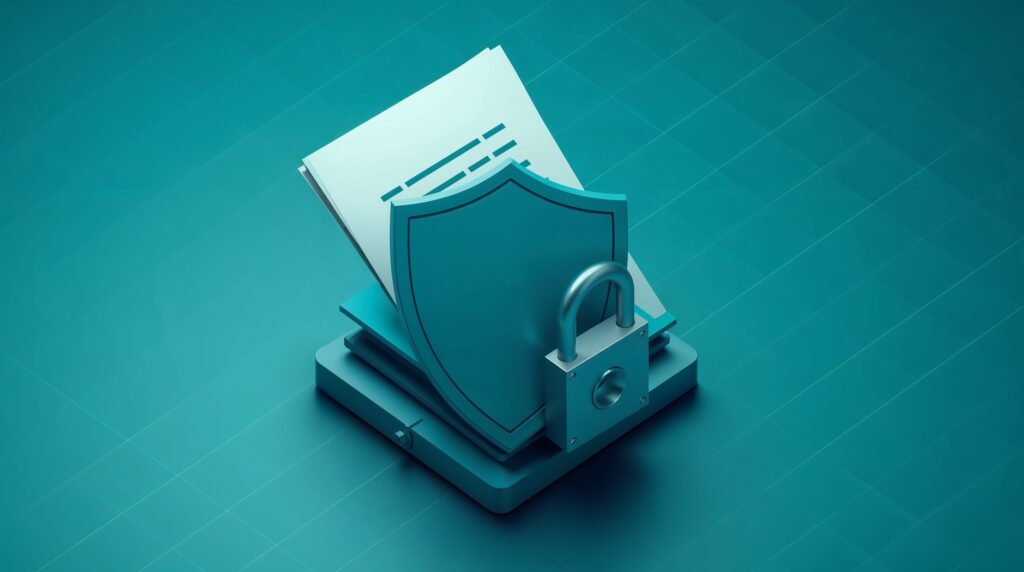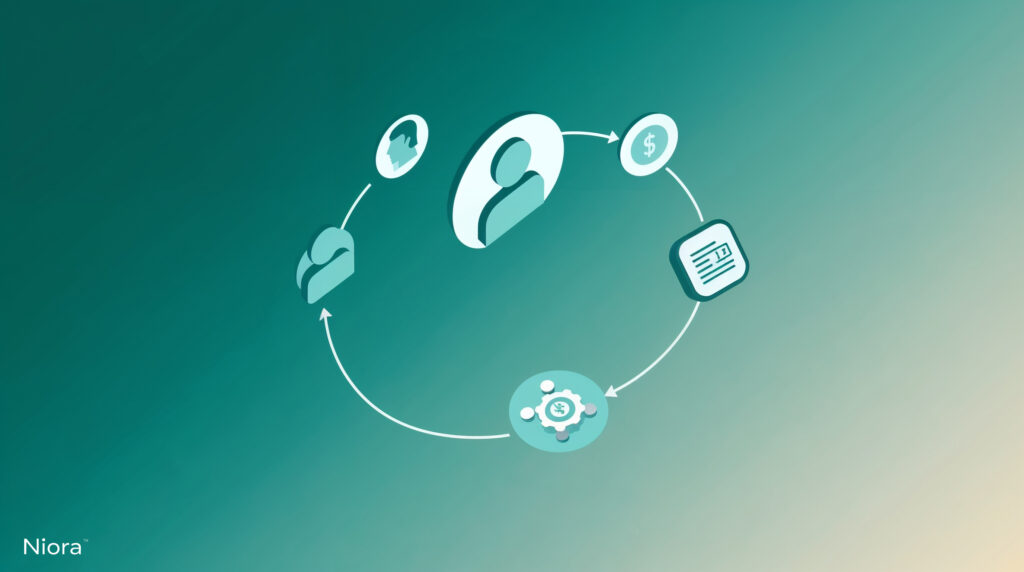TL;DR
Tailored for SaaS businesses, this comprehensive subscription management guide covers billing automation, customer retention, compliance, essential tools, and the latest industry trends. It offers actionable insights to help SaaS companies optimize recurring revenue, reduce churn, and maintain a scalable, audit-ready subscription operation.
Recurring revenue is the engine behind every SaaS business. But as you scale, managing hundreds or thousands of subscriptions gets messy. One missed renewal, billing error, or compliance slip can damage trust and slow your growth.
Subscription management gives you control over the full customer lifecycle. It reduces churn, protects revenue, and keeps your team audit-ready without relying on spreadsheets or duct-taped workflows.
In this guide, we’ll break down what subscription management really means, why it matters, and how to get it right, so your growth doesn’t stall when scale kicks in.
Key Takeaways
- Subscription management helps SaaS teams reduce churn and grow with confidence
- Automation replaces manual work in billing, renewals, and customer changes
- A good platform keeps you compliant, scalable, and always in sync
What Is Subscription Management?
Why It Matters
If you’re running SaaS without solid subscription controls, you’re at risk.
Common issues include:
As your pricing gets more complex you need software that adapts fast and stays compliant.
Subscription management tools centralize everything so you can move faster, stay accurate, and scale without chaos.
What These Platforms Actually Do
Subscription management platforms handle all the messy parts of recurring revenue:
- Create and send invoices automatically
- Track usage, handle upgrades or cancellations
- Retry failed payments and manage dunning workflows
- Sync data with your CRM, product usage tools, and finance systems
Top platforms also support multi-currency billing, contract automation, audit trails, revenue insights, predictive upsell & churn, tax rules, and new pricing experiments.

Core Functions of Subscription Management
Modern subscription management software does more than just send invoices. It solves key problems that block revenue growth and operational clarity.
Automated Billing and Invoicing
Manual billing leads to errors. Errors lead to lost revenue.
Automated billing systems:
- Send accurate invoices on time
- Handle proration, credits, trials, and usage charges
- Automatically retry failed payments and enforce dunning rules
This keeps your cash flow clean and makes your finance team’s job easier. It also ensures a better customer experience, especially when you support multiple currencies or offer flexible billing terms.
Did you know?
Failed credit card payments account for 20–40% of churn in B2B and B2C SaaS companies.
Smart Account Management
Your customers change plans, renew, cancel, or upgrade. If your systems don’t stay in sync, it creates confusion and missed opportunities.
Subscription platforms:
- Track every account in real time
- Show upcoming renewals, current plan status, and support history
- Log every change for compliance and clarity
When your finance, support, and product teams all see the same data, everyone moves faster and makes better decisions.
Replacing Spreadsheets for Good
Spreadsheets slow down scale. They break under pressure and introduce errors you can’t afford.
With the right tools, you get:
- Real-time usage tracking and entitlement monitoring
- Automated workflows for plan changes, renewals, and approvals
- One source of truth for metrics, billing, and account history
This isn’t just about efficiency. It’s about reducing risk, boosting visibility, and giving your team the data they need to grow.
Did you know?
Research shows that 88% of spreadsheets contain errors, leading to costly billing mistakes and lost revenue.

Choosing Subscription Management Tool
Subscription management software is the engine behind your recurring revenue operations. The right platform keeps your billing, renewals, and customer changes running without friction, while giving finance and ops the clarity they need to plan and grow.
But not every tool fits every SaaS business.
What to Look for in a Subscription Management Platform
- Automated Billing & Invoice
- Flexible billing logic
- Real-time reporting and churn analytics
- Native integrations with your CRM, finance tools, and payment gateways
- Role-based access and full audit trails
- Churn & Upsell alerts
Integrations That Keep Revenue Flowing
- Prebuilt integrations with instant setup
- Real-time transaction syncing
- Error handling and status tracking
- Refund and proration workflows that sync back to your CRM or finance system
Drive Operational Efficiency With Automation
- Automate the process from contract signed to first invoice
- Handle renewals, dunning, and alerts with no manual touch
- Show contract and billing status in real time
When Stripe or Braintree Isn’t Enough
- No native support for complex contract terms or revenue recognition
- Limited audit features or account hierarchies
- Manual workarounds for usage-based billing or custom pricing

Optimizing the Subscription Lifecycle for Revenue and Retention
- Boost retention and Customer Lifetime Value (CLV)
- Increase ARPU through timely upsells
- Prevent failed renewals and churn surprises
- Keep customer data clean for reporting and compliance
Streamlined Onboarding and Plan Selection
- Simple, choice-driven plan selectors with clear benefits
- Transparent terms, billing cadence, and trial timelines
- Guided setup with real-time support or in-app checklists
Proactive Renewals and Dunning
- Send automated renewal reminders via email and in-app
- Default to auto-renew with clear opt-out paths
- Trigger dunning workflows for failed payments, retries, and follow-ups
Strategic Upgrades, Cross-Sells, and Upsells
- Feature usage patterns that show a need for more capacity
- Account activity signals (e.g. adding new users, integrations, or peak usage)
- Predictive models that surface accounts ready for add-ons or premium plans
Smart Cancellation and Win-Back Flows
- Single-click exit surveys to collect reasons
- Smart save offers (discounts, extensions, or alternate plans)
- Downgrade or pause options as a softer exit path
- Automated reactivation nudges after cancellation

Retention and Analytics
Self-Service Portals Improve Experience and Reduce Support Load
- Plan changes and billing info
- Downloading invoices or receipts
- Pausing, upgrading, or canceling subscriptions
Customer Engagement That Drives Retention
- Automated renewal and usage alerts
- Quarterly check-ins for high-value accounts
- Targeted product updates or feature guides
- In-app prompts tied to customer behavior
Customer Engagement That Drives Retention
- Churn Rate: Monthly and quarterly churn segmented by plan, region, and cohort
- Net Revenue Retention (NRR): Tracks how much revenue you keep and grow from existing customers
- Customer Lifetime Value (CLV): Helps benchmark acquisition costs and ROI
- Average Revenue Per Account (ARPA): Pinpoints value by segment or use case
Analytics and Feedback Loops That Drive Growth
- Usage patterns + engagement scores = upsell targets
- Downgrade signals + feedback = product improvements
- Cancellation reasons + reactivation trends = win-back strategies
Did you know?
According to Bain & Company, increasing customer retention by 5% can boost profits by 25%–95%.

Compliance and Finance
Subscription management isn’t just about operations. It’s your front line for staying compliant, managing revenue properly, and closing the books without chaos. The right platform gives your finance and ops teams everything they need to scale safely.
Data Security and Compliance by Default
- Role-based access control (RBAC)
- End-to-end encryption (at rest and in transit)
- SOC 2, ISO 27001, GDPR, and CCPA compliance
- Detailed audit logs for every user action
PCI-DSS and Payment Compliance
- Encrypt all cardholder data
- Segment networks and limit access
- Pass regular vulnerability scans and penetration tests
Prevent Data Breaches Before They Happen
- Misconfigured permissions or exposed API keys
- Unsecured storage buckets (e.g. S3)
- Weak password and MFA enforcement
If your tools don’t offer this, you’re adding unnecessary risk.
Revenue Recognition: Stay Aligned With ASC 606 and IFRS 15
- Match revenue to service delivery (not cash collection)
- Handle proration, upgrades, downgrades, and cancellations accurately
- Track revenue schedules across contracts and time periods
Recurring Revenue That Runs Predictably
- Clean billing schedules
- Real-time tracking of earned vs unearned revenue
- Alerts for churn, late payments, or renewals at risk
Handle Late Payments With Smart Dunning
Look for tools that support:
- Retry logic with custom timing
- Email or in-app reminders
- Segment-based messaging (high-value vs low-risk accounts)
- Recovery tracking and churn impact analytics

Subscription management Pricing Models
Modern SaaS companies need flexible pricing systems that support:
- Usage-based and metered billing
- Tiered plans with add-ons
- Hybrid models that blend free, fixed, and variable pricing
Usage-Based and Tiered Pricing That Works at Scale
Together, they let SaaS teams:
- Align revenue with customer growth
- Segment users by willingness to pay
- Launch upgrade paths without sales friction
Freemium and Hybrid Plans Without the Margin Risk
- Gate advanced features or usage caps
- Track activation metrics to trigger upsell prompts
- Set clear upgrade triggers inside the product
Controlling Subscription Costs and Margin Leakage
- Plan-level margin tracking
- Alerts for overuse or abuse of trial plans
- Automated upgrade enforcement when limits are hit
Niora offers usage policy enforcement and real-time cost visibility across accounts, so you can flag risky contracts or heavy free-tier usage before it impacts your bottom line.
You can’t manage what you can’t see. Subscription tools must expose cost drivers, not just revenue inputs.

Where Subscription Management Is Going
The subscription economy keeps expanding, In fact, UBS estimates that the global subscription economy will hit $1.5 trillion by 2025, more than doubling since 2020.
But growth isn’t automatic.
SaaS teams now face more complexity, sharper competition, and rising customer expectations.
Winning in this environment requires more than just billing automation. It demands smarter tools, predictive insights, and a revenue system that adapts to constant change.
Market Growth: More Verticals, More Complexity
Subscription models are no longer just for SaaS. They’ve expanded into fintech, health tech, logistics, and even consumer hardware. This opens new markets, but also introduces operational risk.
As you expand, expect:
- Localized tax and billing compliance
- Multi-currency support
- Usage-based complexity across diverse audiences
- More pressure from investors, auditors, and regulators
Subscription platforms must support global scale, flexible pricing, and audit-readiness out of the box.
Competitive Pressure and Feature Fatigue
Subscription features are easy to copy, and most products feel similar. That makes it easier for customers to leave, especially when switching is simple.
To keep and grow your customer base, you need:
- Real-time usage insights to personalize offers
- Automation to reduce friction across the lifecycle
- Differentiated pricing and support models
Platforms like Niora help here by surfacing upsell and churn signals automatically, so you’re not guessing who to engage or when.
AI, Personalization, and the Rise of Predictive Subscription Ops
AI isn’t just a buzzword. It’s changing how subscriptions are managed:
- Predictive analytics flag churn risk or upsell timing
- NLP extracts contract terms without manual review
- Machine learning personalizes pricing or product nudges
If your platform doesn’t support AI workflows today, you’re already behind. Subscription management is shifting from reactive reporting to real-time decision-making.
Operational Readiness Is the New Differentiator
The best-run SaaS teams don’t just have a good product.
They have:
- Predictable revenue data
- Fast, compliant billing
- Clean handoffs across ops, finance, and sales
Subscription platforms that unify contract, billing, and usage workflows make this possible. Niora is purpose-built for this kind of operational clarity.
Subscription Management FAQ
What are the key features to look for in subscription management software?
Look for automated billing, payment processing, and support for multiple payment methods. Good software should allow subscription upgrades, downgrades, and cancellations. It should also offer reporting tools and integration with other business systems.
Bonus: As SaaS operations get more complex, AI capabilities are becoming critical. Modern platforms like Niora let you “talk to your data”, ask natural-language questions like “What’s our churn risk this quarter?” or “Which accounts are overdue but still active?” and get instant answers. Niora also uses AI to automatically extract contract data, map terms to billing logic, and surface upsell opportunities, no manual tagging or spreadsheet chasing required.
What challenges do subscription services face in order management?
Why do SaaS companies need a subscription management platform?
Because spreadsheets break. SaaS teams need automation, auditability, and accurate revenue metrics. A subscription platform reduces failed payments, prevents churn, improves customer experience, and ensures compliance. It also gives your team a real-time view of ARR, churn risk, and upsell potential.
Can subscription platforms handle usage-based pricing?
Yes, if they’re built right. A good platform ingests real-time usage, applies tier logic or metered billing, and displays invoices clearly. This reduces billing friction, supports hybrid pricing, and unlocks new revenue without manual calculation or reconciliation.
How does Niora compare to Chargebee or Recurly?
Niora is built for SaaS, by SaaS operators. Where tools like Chargebee and Recurly primarily solve for billing logistics, Niora goes deeper, unifying contracts, usage, and revenue into one clean system that mirrors how modern SaaS companies actually operate.
It’s not just about sending invoices. Niora brings operational clarity with:
- Predictive upsell and churn signals so you never miss a revenue moment
Automated billing and invoice workflows, including support for usage-based and hybrid pricing
Contract automation that extracts terms from agreements and maps them to billing logic
- Real-time dashboards that show ARR, churn, dunning recovery, and more across teams
AI-powered insights with “Talk to Your Data”, where you ask questions like “Which renewals are at risk?” or “What’s our current unearned revenue?”, and get answers in seconds
What sets Niora apart is that it was designed by teams who’ve scaled SaaS companies before, who know what breaks when ARR hits €5M, and who’ve lived through audits, messy renewals, and spreadsheet chaos.
That’s why Niora includes AI-powered features like “Talk to Your Data”, contract ingestion, and smart dunning recovery, because scaling SaaS isn’t just about charging cards, it’s about making revenue ops bulletproof.
If Stripe Billing is too simple and legacy platforms feel bloated or generic, Niora is the purpose-built alternative.
How can I reduce churn with better subscription operations?
Churn is not just a support problem. It often stems from broken subscription workflows. When customers encounter failed payments, confusing renewals, or inflexible cancellation paths, they leave. Optimizing your subscription operations reduces friction, improves retention, and helps you act before accounts disengage.
Here’s how strong subscription management helps lower churn:
- Automated dunning workflows retry failed payments and trigger follow-ups
- Renewal reminders via email or in-app keep customers informed and engaged
- Flexible cancellation flows offer options to pause or downgrade instead of canceling
- Churn risk signals based on usage drop-off, delayed payments, or account changes
- Self-service portals let customers update billing or change plans without needing support
These aren’t just operational improvements. They are direct drivers of retention and revenue stability.
